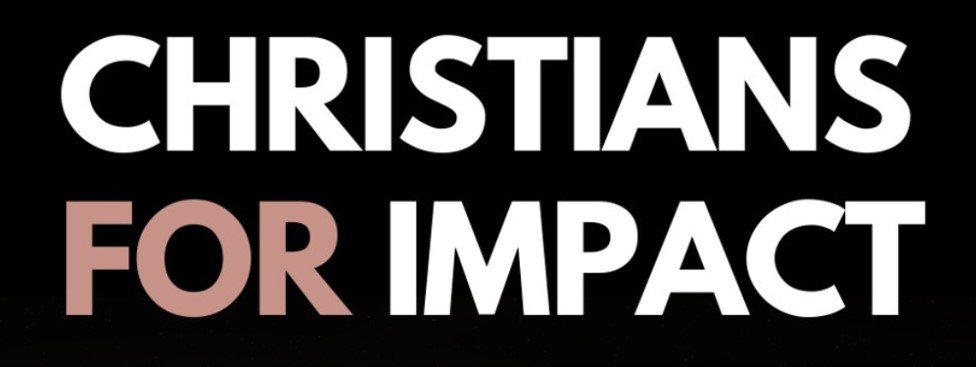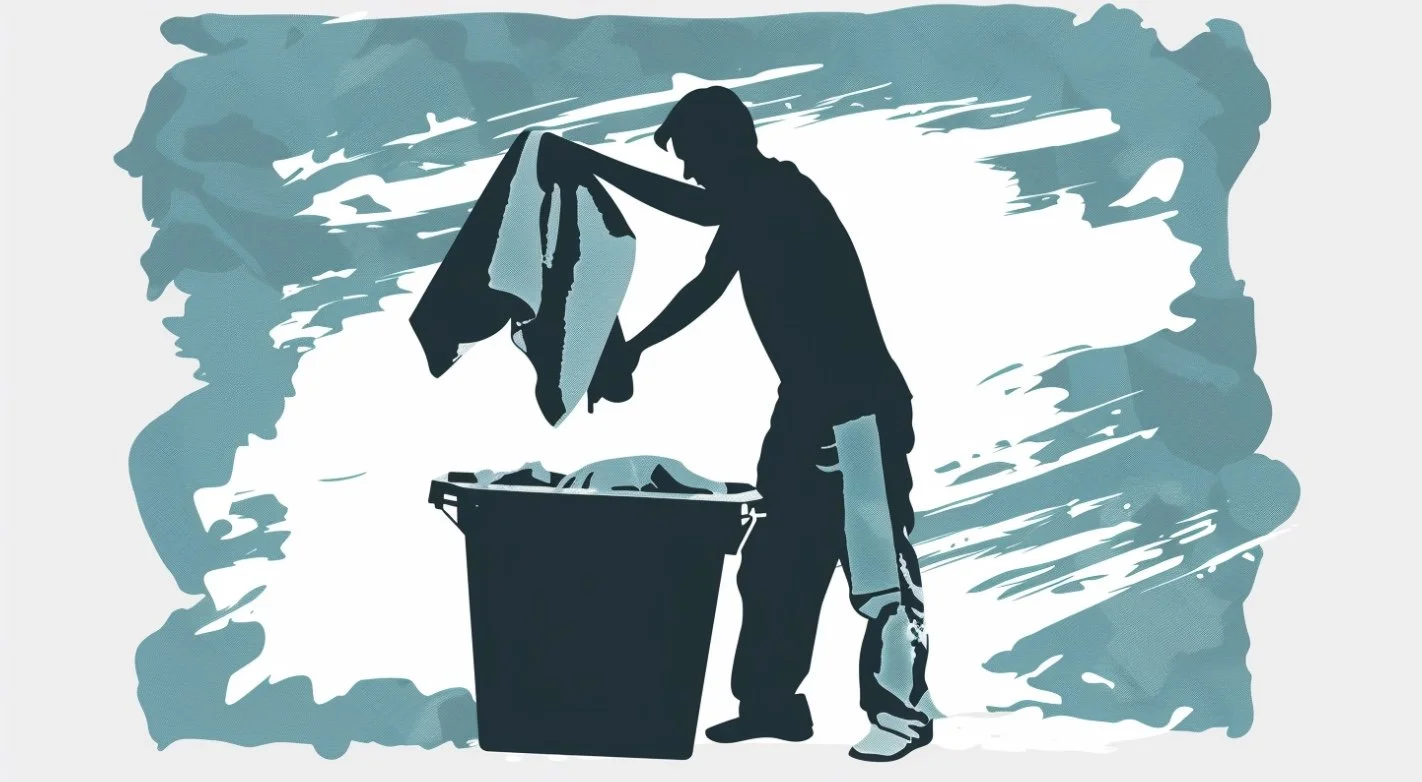
When Should You Settle in Your Career?
Written October 28 2024
Est. 10-15 minute read
This article draws heavily from 80,000 Hours (see their up-to-date entry here).
What the research says about how much to explore in your career
When faced with the choice of a career path, you might feel torn between settling on the option that seems best for now or exploring other possibilities that God may have in store for you. While Steve Jobs famously said to “never settle,” it’s important to find a balance between committing to a path and seeking new opportunities.
As Christians, we know that discerning God’s will for our lives can be difficult, and predicting long-term success is often beyond our understanding. Embracing a mindset of exploration can be likened to a faithful journey of discovery, where we trust in God’s guidance as we test different paths.
The crucial question is how much time and energy to invest in exploration while also considering its potential costs. Insights from decision science and psychology can help us navigate these choices. Ultimately, if you desire a career that not only brings personal fulfillment but also allows you to make a positive impact for God's kingdom, the importance of exploration becomes even more significant.
The information value of exploration
The typical 25- to 34-year-old changes jobs every three years, and changes are not uncommon later in life too. Many successful people have tried several paths before finding one that worked out — Tony Blair even worked as a rock promoter before going into politics.
Many people don’t have the luxury of exploring different paths, but if you do, taking that time can easily be worth it. For instance, if exploring meant you could find a career path that’s twice as good as your current best guess, it would theoretically be worth spending up to half of your career searching for that path.
We’ve argued that some career paths open to you will do 10 or 100 times as much to help the world as others, and so even if you spent 10 years searching for a path like this, it would be worth it — in your remaining 30 years of work, you’d achieve as much as would have taken 300 in your previous path. It’s often possible to find paths that are more enjoyable or give you better skills too.
We can analyse the value of exploration by using a concept from decision science — ‘information value’.
The information value of trying a job is what you learn about which longer-term paths are best. The value depends on the chance that you discover a path that’s better than your current best guess, weighted by how much better that new path is (based on whatever you value).
When comparing jobs you might take during your job search, you care about both:
The immediate impact of and satisfaction you gain from the job
How well it sets you up to find better opportunities in the future
We can now see that the latter consists not only of the career capital you gain from the job (such as transferable skills, professional network, and reputation), but also the information value it gives you. We could say:
Contribution to long-term impact of job = immediate impact + career capital + information value
The best job for you is the one that delivers the most value across all three factors, plus the personal satisfaction you gain from it.
A job could be a ‘failure’ in the sense that you didn’t have any impact, or hated it and quit. But if you’re able to eliminate a long-term path as a result of this experience, that can still be valuable — you’ve just saved yourself years of wasted effort.
To sum up: each job you take is also an experiment to help you learn about what’s best for you in the long term.
Which jobs should you take to explore?
The paths that are best to try out (i.e. have the most information value) are those that:
Might be a lot better than your current best guess: if a path isn’t much better than your current best guess, then even if your test goes well, you haven’t gained much.
You’re uncertain about: if you already know it’s better, then you should just take it now.
Could let you reduce your uncertainty relatively easily: if trying the path wouldn’t tell you much about your fit, then there’s also not much to be gained from testing it — better just to take your best guess now.
Can you think of a career path that meets all three of these conditions? If so, there’s a pretty good case for trying it out.
We often advise people who feel very uncertain about which paths are best for them, but are tempted to try out a corporate job, like accounting or consulting. While this might make sense because of the helpful career capital, it often doesn’t have much information value — these people usually don’t expect that the corporate path is their best long-term path, and they’re normally pretty certain about that.
Tradeoffs of career exploration
The temptation to do the corporate job, however, does illustrate a real tradeoff: your best job for information value might not be the best for career capital, impact, or satisfaction.
Trying out a different career path not only takes years, but the costs can be even higher than they first seem.
Some competitive careers have an ‘elevator’ structure, where if you get off the standard track, it’s hard to re-enter — and even if you can re-enter, it’s hard to make it to the top. This can make it higher-risk to try out alternative paths early on, since by leaving you might miss your chance of outsized success.
Academia is the most common example of this among our readers. Going from a PhD to a postdoc, and then into a permanent academic position, is very competitive, and it’s unlikely you’ll succeed if you don’t focus the vast majority of your effort on research. This makes it hard to re-enter academia if you try something else after your PhD.
Exploring also delays your impact, which could be a significant cost if you think there are especially urgent opportunities to do good right now that won’t be around in the future. For example, if you’re trying to shape fast-moving technologies, that will be harder to influence as time goes on.
But we’ve also argued above that the potential gains to exploration are very large too, especially if you want to have an impact. Going from ‘very good’ to ‘excellent’ might only increase your own wellbeing a little bit, but it could mean having 10 times as much impact.
So, both the benefits and costs of exploration can be large. What strategy should you take to balance these?
Career exploration strategies
This question has been studied in computer science, as part of research into topics like the ‘explore-exploit tradeoff‘ and ‘optimal stopping’ (of which the ‘secretary problem‘ is one example).
The lesson we take from this research is that there are two exploration strategies that make sense practically. The first we call the upside option strategy, and is usually our first recommendation. The second involves trying out several paths early career, and then picking your best guess after that.
As we saw above, information value is higher the better an option might be, and the more uncertain you are about it. This favours taking long shots — paths that might be outstanding if they go well, but have a good chance of not working out.
Here’s a concrete process for doing that:
Rank the longer-term paths open to you in terms of upside — how much impact you would have in them if you performed unusually well compared to your best guess? (To be more precise, you could imagine how each path would look in the top 10% of scenarios.) We call the career options that seem best in these ‘upside scenarios’ your ‘upside paths.’
Try out one of your most promising upside paths.
If you find it’s going well, then continue.
If you’re not on track to hit the upside scenario, switch into the next-best upside path.
It’s attractive because there’s an asymmetry: in the good case, you’ve found an amazing new career path, which you can continue with for many years; if it doesn’t work out, you can switch to something else relatively quickly. The costs of spending a few months or even years trying out a path are often low relative to the huge benefits if it turns out well.
Taking this strategy is also attractive because if you’re trying an elevator career, you can stick with it until you’ve decided you’re not likely to have outsized success, which is often where most of the impact would come from. (There are also several other reasons we think it’s good to aim high.)
However, there’s an important caveat to keep in mind: the asymmetry argument only works if the downsides of exploration are capped:
First, you have to make sure that you’re in a sufficiently robust position — personally, professionally, and financially — that an experiment not working out won’t do you considerable long-term harm. That means making sure you have a backup plan and remain able to switch into something else if it doesn’t work out.
Second, if you’re focused on impact, then in certain areas — ‘fragile fields’ — it’s easy to make things much worse than you found them. If you’re doing something high-stakes in one of these fields, it’s important to modify your plan to reduce the chance of setting back the field before pursuing upsides. We cover this in our article on good intentions that backfire.
Finally, note that what counts as an ‘upside scenario’ should depend on how much you want to prioritise exploration, which depends on how much you prioritise impact and how early you are in your career. For instance, if you’re right at the start of your career, you might want to aim at what’s best based on the top 5% of scenarios; if none work out after a while, then reduce that to the top 20% of scenarios — and eventually focus on the most likely scenarios.
2. Plan to try out several paths through careful ordering
The second career exploration strategy is to plan to try out several paths, and then decide later which is best. If you order your options carefully, it’s often possible to try several paths with minimal costs, then decide later which is best.
This strategy is similar to solutions to the ‘secretary problem‘ in computer science. The standard set up of the secretary problem seems to overstate how much you should explore, but spending 5–20% of the total length of your career with exploration as a top priority seems reasonable for people focused on impact, and that would be 2–8 years.3
One common pattern is to do a gap year before college, then try several internships while at college, then do something more unusual and risky for 1–2 years after graduating. If the unusual option goes well, you can continue, and otherwise you could try going to graduate school, which ‘resets’ you onto a more standard path. For instance, you could try an unusual startup or nonprofit project for a few years, and then do a PhD and continue with academia, or go to law school and continue into policy, and so on.
Later in your career, if you’re genuinely unsure between two options, you might want to try the more ‘reversible’ one first. For instance, it’s easier to move from business to nonprofits than vice versa.
While examples of people who specialised early, like Tiger Woods, are often salient, it doesn’t seem necessary to specialise that early, and it’s probably not even the norm. In the book Range: Why Generalists Triumph in a Specialized World, David Epstein argues that most people try several paths, and that athletes who try several sports before settling on one tend to be more successful — holding up Roger Federer as a foil to Tiger Woods.
Another recent paper in Nature found that ‘hot streaks’ among creatives and scientists tended to follow periods of exploring several areas. This is just a single paper, but at least suggests exploring several paths can be a good strategy in some cases.
Compared to the ‘upside options’ strategy, this strategy keeps you from committing to anything for years, so has significant costs. If you can identify an upside path now, trying it right away is usually better.
Planning to try out several paths is most attractive when you’re very uncertain, when you won’t risk compromising your future in an ‘elevator’ career, and when you’re early in your career (when the costs of exploration are lowest).
Consider including a wildcard
One drawback of both of the strategies above as written is that your best path might well be something you haven’t even thought of yet.
This could suggest exploring and testing out options outside your normal experience, to give yourself the chance of uncovering something totally different. That might mean living in a very different culture, participating in different communities, or trying different sectors from the ones you already know (e.g. nonprofits, government, corporate).
3. Explore within your job
An alternative approach is to take a job that lets you try out several areas by:
Enabling you to practise many different skills. Jobs in small companies are often especially good on this front.
Enabling you to work in a variety of industries, such as certain types of freelancing or consulting positions.
Giving you the free time and energy to explore things outside of work.
Be more willing to quit
Another rule of thumb to consider: if you’re on a path that’s only going so-so, you should probably try something else. (If you can afford to.)
If the path is only going so-so, it’s probably not an upside option, and so doesn’t have much information value. It’s probably also not a great fit.
Due to the sunk cost bias, we’d expect people to continue with their current path for too long. We’d also expect people to want to avoid the short-term costs of switching, and to be averse to leaping into an unknown new option.
This all suggests: if you’re on the fence about quitting your job, you should quit.
This is exactly what an influential randomised study found. Steven Levitt recruited tens of thousands of participants who were deeply unsure about whether to make a big change in their life. After offering some advice on how to make hard choices, those who remained truly undecided were given the chance to flip a coin to settle the issue — 22,500 did so.
Levitt followed up with these participants two and six months later to ask whether they had actually made the change, and how happy they were one a scale of 1 to 10. It turned out that people who made a change on an important question gained 2.2 points of happiness out of 10. Of course, this is just one study, and we wouldn’t be surprised if the effect were smaller on replication. However, it lines up with what we’d expect.
How much should you explore at different stages in your career?
It varies by person. If you’re following the upside option strategy, and you luck into something great early on, you might never need to try anything else. Or, you may need to try over and over again to get a hit.
However, there are clear arguments that people should generally explore more earlier in their career. This is because when you’re early on:
You have the most time remaining to take advantage of new options you discover, whereas if you find a new career path when you’re 60, you can only benefit for a few years.
You have the least information about what’s best, since you haven’t tried many jobs.
The costs of exploring are lower: young people are expected (often encouraged) to change jobs more often, and there are low-cost opportunities to try things out (like internships), which aren’t always available to older people.
This is the justification behind the common advice to be more ambitious and broaden your horizons while young. The younger you are, the more you can focus on information value — and the more you’re focused on information value, the more ambitious the upside paths to aim for. As you get older, you’ll focus more on ‘exploiting’ your best-guess choice rather than exploring to find something even better.
However, you’ll keep learning about your fit and which options are best throughout your career, so information value remains important for everyone. A middle-aged person who has just quit a long corporate career would suddenly face more uncertainty and lower costs to experimentation than most people their age, and so might do well to go back into exploration mode for a period.
Summing up
Seek roles that build diverse skills or allow outside interests.
If a path feels wrong, consider a new direction.
Younger years are ideal for growth and skill-building.
Stay open to where He may lead, at any stage.
Need help discerning your career? Sign up for our free one-on-one impact mentorship here.
To read more about it click here.
Do you have any career uncertainties? Click here to read our article on three big career uncertainties you can trust God with.





